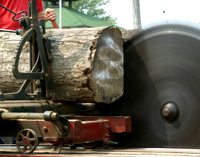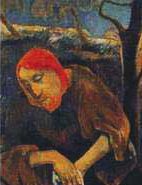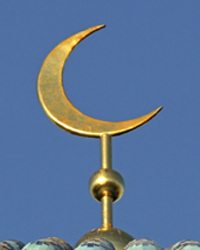How Derived: Memories in Adulthood
Researcher: Ian Stevenson, MD
From: European Cases of the Reincarnation Type, by Ian Stevenson, MD
Article by: Walter Semkiw, MD from Born Again
Helmut Kohler’s Successful Business as a Timber Merchant & Broker
 Helmut Kohler was born on January 7, 1834, to a Christian family in Wilhelmshaven, Germany, a seaport on the North Sea. He married and had several children, including a son named Ludwig, who was born in 1873.
Helmut Kohler was born on January 7, 1834, to a Christian family in Wilhelmshaven, Germany, a seaport on the North Sea. He married and had several children, including a son named Ludwig, who was born in 1873.
Helmut was a timber merchant, ship-broker and sawmill operator in his home town of Wilhelmshaven. He purchased timber from various countries, including Norway, Sweden, Russia and America, which was transported by ship. He processed the timber in his sawmill and sold it as lumber.
Helmet Speculates on Timber, Loses his Fortune & Commits Suicide
In 1887, Helmut anticipated that the price of imported lumber would go up due to a proposed tax and he paid a premium price on a large amount of timber from overseas. The tax was never enacted and the price of timber actually fell. This miscalculation resulted in the loss of a great deal of money.
 In an effort to survive financially, he enlisted his accountant in a scheme to falsify the company’s financial records. Unfortunately, the accountant panicked and fled with all the company’s cash.
In an effort to survive financially, he enlisted his accountant in a scheme to falsify the company’s financial records. Unfortunately, the accountant panicked and fled with all the company’s cash.
Helmut was devastated by his financial losses. On November 16, 1887, after attending a celebration for the festival day called the Day of Repentance and Prayer, Helmut went back to his office. He put a revolver to his temple and shot himself in the head. He died on November 23, 1887.
Helmut Reincarnates as Ruprecht Schultz with Suicide Behavior
Ruprecht Schultz was born on October 19, 1887, in Berlin, Germany to Christian parents, five weeks before Helmut Kohler died. As such, if this reincarnation case is accepted, it represents a case of split incarnation, where a soul can inhabit more than one human body at a time. Consider that Ruprecht was in the womb for 8 months while Helmut was still alive.
 As a child, whenever Ruprecht became depressed, he would shape his hand into a gun, with the index finger representing the barrel of the gun. He would put his index finger to his temple and say, “I shoot myself.” (1)
As a child, whenever Ruprecht became depressed, he would shape his hand into a gun, with the index finger representing the barrel of the gun. He would put his index finger to his temple and say, “I shoot myself.” (1)
Ruprecht pretended to shoot himself in the temple so often that his mother became concerned and ordered him to stop this behavior.
As a child, Ruprecht was fascinated with revolvers. In addition, he also had a great interest in ships and shipping. He built a collection of model ships and pictures of ships. Ian Stevenson noted this was unusual for a boy who was born and raised in Berlin, which is an inland city without a port.
Past Life Ability: Ruprecht Demonstrates Innate Talent for Business
As he grew up, Ruprecht had little interest in education; rather, he was driven to start a business. He left school at 18 years of age and started a laundry business with a delivery service, which became very popular with young mothers, whose babies created a great deal of dirty laundry. By the age of 20, he had more than twenty employees and his company would grow to employee 200 people.
Ruprecht became rich and enjoyed participating in community affairs. He became a member of his local Chamber of Commerce and a representative in the Berlin municipal council.
 Reincarnation & Deja Vu in a Dark Hallway
Reincarnation & Deja Vu in a Dark Hallway
World War II began in 1939, when Ruprecht was 51 years old. The war would significantly affect Ruprecht’s life and financial holdings. It was during Allied bombings of Berlin that past life memories began to surface.
Ruprecht was assigned duty watch by city authorities to observe for fires that could arise from the bombings. Ruprecht took a regular shift from Saturday evening to Monday morning, during which he would stay at his business office to get work done during quiet hours. His  office was in an old building that was designated as a historical landmark. He had a safe located in a dimly lit hallway. Ruprecht would to go the safe, get his account books and reflect on how the business was going.
office was in an old building that was designated as a historical landmark. He had a safe located in a dimly lit hallway. Ruprecht would to go the safe, get his account books and reflect on how the business was going.
Whenever Ruprecht went to the safe to get the account books, he would have the repetitive thought: “You were in this situation once before.” (2)
Past Life Memory: While Fully Awake, Ruprecht Sees Himself Commit Suicide on a Ceremonial Day
While reviewing his account books and while fully awake, Ruprecht would see himself in a past lifetime. In a tape recorded statement, Ruprecht explained:
“I could see how I looked then. I was wearing a high collar and formal clothing. I had come from a ceremony on a special day. My business was finished. An employee had run off with the money—embezzled it and absconded. So I sat down with the account books and could see that there  was no future. It was all over. Then I was in a room by myself and put a bullet into my head at the right temple. You would call these images clairvoyance, but for me, they are memories.”(3)
was no future. It was all over. Then I was in a room by myself and put a bullet into my head at the right temple. You would call these images clairvoyance, but for me, they are memories.”(3)
In another statement, Ruprecht noted how similar the settings were in the past lifetime and his current incarnation during World War II, when the memories emerged:
“The setting of the previous time was similar to the one I was in then. The safe was in a similar location and the account books were also similar.” (4)
Ian Stevenson noted that Ruprecht’s memories were vague at first, but over time, they became clearer and clearer. The memories only occurred when Ruprecht was fully awake and they only occurred when he was in his office during his watch duty. The office setting in Berlin replicated the office setting in his previous lifetime. This similarity appears to have triggered his past life memories.
Past Life Memories: Ruprecht Remembers a Lifetime Involving Shipping & Lumbar in Wilhelmshaven
 In a written statement, Ruprecht elaborated on his memories:
In a written statement, Ruprecht elaborated on his memories:
“Since my earliest years, I have had a distinct impression, with various details that I was in a previous life somehow connected with ship building or shipping and that I shot myself. I was in the prime of life. For the place of this life I knew that it occurred in an old small or middle-sized seaport; and is seemed to me later and more clearly that this seaport was Wilhelmshaven.
Further, the man I was seemed to be in an ancient house. In this there was a small room with a chest or kind of safe or filing cabinet in which important papers, account books and probably also some cash were kept. The person I was wore dark clothes of the style of that period, as if he had come from some important session or unusually important event. As for the date of these events—the suicide of the person I was—it has seemed to me that it would have been around 1885.” (5)
Ruprecht also recalled that in this past lifetime, he was involved in a business dealing with wood. Ruprecht started to keep a diary, writing down memories as they surfaced. He was not able to verify his memories until after World War II had ended.
Validation of Ruprecht’s Past Life Memories
Ruprecht remembered that his past lifetime was spent in a small seaport town in Northern Germany. He felt that Wilhelmshaven was the correct place, but he also considered several other towns in Germany on the North Sea.
Ruprecht wrote to municipal authorities of Wilhelmshaven and nine other seaside towns, inquiring whether they knew of a businessman who was involved with shipping of timber, the lumber business and who had shot himself and died in the 1880’s.
 Of the ten cities he wrote to, all responded indicating that they knew of no such man, except for Wilhelmshaven. An official from Wilhelmshaven wrote to Ruprecht and stated that a man from that town did fit the description. The man was a ship broker and timber merchant, who had committed suicide.
Of the ten cities he wrote to, all responded indicating that they knew of no such man, except for Wilhelmshaven. An official from Wilhelmshaven wrote to Ruprecht and stated that a man from that town did fit the description. The man was a ship broker and timber merchant, who had committed suicide.
In the first letter from Wilhelmshaven, the official wrote that the family name of timber merchant was “Kohl.” Ruprecht knew that this name was slightly off. In a second letter from the official, the family name was corrected to “Kohler” and Ruprecht was provided with the address of the man’s surviving son, Ludwig Kohler. (6)
Relationship Renewed through Reincarnation: Ruprecht Gets a Letter from his Past Life Son, Who Confirms Helmut’s Past Life Memories
On September 17, 1952, Ruprecht wrote to Ludwig Kohler who responded and confirmed that Ruprecht’s past life memories corresponded closely to the life of his father, Helmut Kohler. Ludwig, in a letter to Ruprecht, gave the following testimony:
 “My father, Helmut Kohler, had a substantial business in Willhelmshaven that included trading in timber and also a sawmill. Our residence was in 25 Friedrichstrasse, and right next to it was a one-story building that was used for the offices. This building faced north, and it had only small windows, so that it was always dark in there. In a corner of one of the rooms there was a somewhat antiquated safe, which you have mentioned. In it money, account books, and also a cash box and important papers were kept. My father ordinarily wore dark clothing, and when ever he went out he wore a top hat on his head.
“My father, Helmut Kohler, had a substantial business in Willhelmshaven that included trading in timber and also a sawmill. Our residence was in 25 Friedrichstrasse, and right next to it was a one-story building that was used for the offices. This building faced north, and it had only small windows, so that it was always dark in there. In a corner of one of the rooms there was a somewhat antiquated safe, which you have mentioned. In it money, account books, and also a cash box and important papers were kept. My father ordinarily wore dark clothing, and when ever he went out he wore a top hat on his head.
He imported wood by ship from Danzing, Konisberg, and Mermel, but in particularly from Norway, Sweden, Finland, Russia and America. In 1888 he mistakenly believed that a customs duty would increase, and he purchased from abroad an unusually large amount of timber. Unfortunately, this was a faulty speculation, because the price of timber fell and much more than the customs duty rose. He then had difficulty in paying the invoices.
In order to get through the crisis he had arranged for his accountant, who had been his ‘right hand’ and enjoyed his complete trust, to falsify the records of their foreign exchange transactions. The two of them thought that they would extricate themselves when the exchange rate fell. This did not happen. The accountant became afraid that he would be arrested, and he fled to America taking with him a substantial amount of the company’s available funds.
My father now got into a complete panic and shot himself on the Day of Prayer and Repentance. The company had to declare bankruptcy, although this was in fact unnecessary. Even though the buildings, the sawmill, and the lumber on hand were all sold in a forced auction, all the creditors were paid off.” (7)
Relationships Renewed through Reincarnation: Ruprecht Meets Ludwig and Recognizes Other Past Life Sons in Photographs
In October 1956, Ruprecht traveled to Wilhelmshaven for the first time, where he met Ludwig Kohler. Wilhemshaven is 370 kilometer or 230 miles from Berlin. As noted, Ruprecht had never been to Wilhemshaven before. Ludwig was 12 years old when his father, Helmut, committed suicide. Now, as an adult, Ludwig would meet the proposed reincarnation of his father.
Ruprecht said that he recognized certain buildings, such as the Town Hall, in Wilhelmshaven. He stated that when Ludwig showed him photos of the Kohler children, who were pictured among a large group of schoolchildren, he was able to recognize Helmut’s other sons from the crowd, though he was not able to recognize his past life daughters.
Ian Stevenson, MD on the Strength of the Helmut Kohler | Ruprecht Schultz Reincarnation Case
In sum, Ruprecht was able to validate his past life memories by contacting his past life son, Ludwig Kohler. Ian Stevenson considered the case of Helmut Kohler | Ruprecht Schultz as one of the strongest reincarnation cases he had studied. Stevenson was particularly impressed with Ruprecht’s validated memories involving a past life involving a shipping and timber business in the remote town of Wilhelmshaven, which ended in suicide. Stevenson felt this combination of memories was far too unusual to occur by chance or coincidence.
The Karma of Suicide
Is there a penalty for committing suicide? I asked this question in a session with Kevin Ryerson, who channels a spirit being named Ahtun Re who I have worked with since 2001. Ahtun Re is the most intelligent being I have ever interacted with. In sum, the consequence of suicide is that one will have to reincarnate and face the same type of situation that led to the suicide. In other words, one cannot escape a difficult situation through suicide, for one will have to face the same situation in a future lifetime.
Past Life Karma: Rupecht Loses his Fortune, Replicating the Circumstances of Helmut’s Suicide
 The case of Helmut Kohler | Ruprecht Schultz provides a dramatic example of this principle. Reflect that Helmut became wealthy in dealing with timber imports and the processing of lumber. When his financial situation took a downturn and he faced bankruptcy, he committed suicide to escape the consequences of his loss of fortune.
The case of Helmut Kohler | Ruprecht Schultz provides a dramatic example of this principle. Reflect that Helmut became wealthy in dealing with timber imports and the processing of lumber. When his financial situation took a downturn and he faced bankruptcy, he committed suicide to escape the consequences of his loss of fortune.
Helmut then reincarnated as Ruprecht Schultz, who as a youth demonstrated natural skill as an entrepreneur. As such, Ruprecht appears to have retained business talent from his past lifetime as Helmut. Ruprecht, like Helmut, became very wealthy. He also became involved in civic duties. Helmet appears to have been a city official who dressed in formal attire for the Day of Repentance and Prayer. Ruprecht became a member of his local Chamber of Commerce and a representative to the Berlin municipal council. Life patterns are observed to repeat.
Like Helmut, Ruprecht also lost all his wealth, though for Ruprecht, it was not due to bad business decisions. Quite the opposite, Ruprecht noted that in his contemporary lifetime, he had been a very conservative investor who avoided risk, which he attributed to the losses incurred in his lifetime as Helmut. Instead, the cause of Ruprecht’s lost fortune was the destruction of Berlin during World War II. The division of Berlin into East and West sides after the war caused him further financial loss.
Ruprecht retired from business when he was 68 years old and moved with his wife from Berlin to Frankfurt, where he died at the age of 80 in 1967.
If Evidence Indicates Reincarnation is Real, is Suicide a Viable Option?
 Though everyone has to make their own decisions, it is recommended that suicide not be considered an option for those in difficult circumstances for several reasons:
Though everyone has to make their own decisions, it is recommended that suicide not be considered an option for those in difficult circumstances for several reasons:
1. First of all, one never knows when life circumstances will change. Recall that Ludwig, Helmut’s son, noted that his father’s suicide was unnecessary, as when Helmut’s business assets were sold in the forced auction, all creditors were paid. Helmut, it appears, underestimated the worth of his assets. Helmut could have lived out his life and enjoyed seeing his children grow, though his lifestyle would have been less luxurious.
In my medical career, I have witnessed several cases in which people were acutely suicidal due to adverse life events. Within a few years, though, their situations had changed considerably and they found themselves living very happy lives. Anyone with suicidal thoughts should seek psychiatric help. Psychotherapy and antidepressant medication can be very effective and help people make it through periods of depression.
2. Suicide is not an escape, as one will need to return to deal with the same situation, as demonstrated in the reincarnation case of Helmut Kohler | Ruprecht Schultz. Suicide does not lead to eternal damnation, as some religions teach. Rather, suicide will make the soul face the same lesson so that a more adaptive and positive decisions can be made.
3. Suicide causes emotional trauma to loved ones who are left behind. In addition to experiencing grief due to the loss of their loved one, other emotions that can be felt are guilt and confusion, as the surviving loved ones wonder if they could have done more to prevent the suicide. There are karmic consequences to causing emotional pain to others. Pain caused in others may need to be experienced by the suicide victim in a future incarnation.
In the United States, people struggling with depression and suicidal thoughts can be access help through the:
National Suicide Prevention Lifeline Phone Number: 1 800 273-8255
This reincarnation case has several interesting features:
Geographic Past Life Memory: We have defined geographic memory as past life memories or emotions that are stimulated by visiting a past life location. In this case, it was not a visit to a past life physical location, rather, the replication of a past life scenario which stimulated memories.
Recall that when Ruprecht would go to his safe in the dark hallway to look at his account books, he had the thought that he had been in this situation before. Later, as he returned to the hallway and retrieved the account books from the safe, memories started to surface, which became clearer and clearer.
The stimulus for Ruprecht’s memories was being in the same setting, a dark office with an old safe and reviewing business account books, which replicated the setting of Helmut’s suicide.
Relationships Renewed through Reincarnation: After committing suicide, Helmut reincarnated as Ruprecht and was reunited with Ludwig Kohler, Helmut’s surviving son. Indeed, it was through Ludwig that Ruprecht was able to validate his past life memories.
Split Incarnation or Parallel Lives: Helmut died on November 23, 1887, while Ruprecht was born on October 19, 1887, five weeks before Helmut died. As such, this represents a case of split incarnation, where a soul animates more than one human body at a time. Consider that Ruprecht was in the womb for 8 months while Helmut was still alive.
As will be discussed in the section entitled, Soul Evolution, it is believed that the soul is involved with the development of the fetus from the time of conception. If this is true, the soul of Helmut Kohler was involved in developing a new incarnation as Ruprecht Schultz while it was still animating the body of Helmut. Why would it do so?
In general, the soul uses split incarnation to more effectively develop or accomplish goals. For example, if a soul is involved in a project to help the world evolve, the soul may plant several incarnations of itself in different parts of the world.
The soul can also be aware of patterns of behavior, including suicide, and anticipate that an incarnation may be cut short. Consider that in the reincarnation case of Paul Gauguin | Peter Teekamp, Paul had an unsuccessful suicide attempt, as did Peter in contemporary times.
Though we cannot know for sure, in the case of Helmut, his soul may have foreseen that a suicide might occur. His soul then started the process of another incarnation as Ruprecht, prior to Helmut’s death, to continue its evolution.
Reincarnation & Innate Talent-Past Life Ability: Ruprecht demonstrated natural talent as an entrepreneur and businessman at the age of 18, becoming wealthy in a short period of time. It appears that Ruprecht was drawing upon business abilities developed in his prior incarnation as Helmut.
Footnotes
1. Stevenson, Ian: European Cases of the Reincarnation Type, McFarland, 2003, page 221
2. Stevenson, Ian: European Cases of the Reincarnation Type, McFarland, 2003, page 213
3. Stevenson, Ian: European Cases of the Reincarnation Type, McFarland, 2003, page 213
4. Stevenson, Ian: European Cases of the Reincarnation Type, McFarland, 2003, page 213
5. Stevenson, Ian: European Cases of the Reincarnation Type, McFarland, 2003, page 214-215
6. Stevenson, Ian: European Cases of the Reincarnation Type, McFarland, 2003, page 211
7. Stevenson, Ian: European Cases of the Reincarnation Type, McFarland, 2003, page 216
 How Derived: Past Life Memories in Childhood
How Derived: Past Life Memories in Childhood Rabih became depressed and attempted suicide by taking an overdose of medications, but he was taken to a hospital and survived. His family in South Pasadena tried to keep an eye on him to prevent another attempt, but on January 9, 1988, Rabih committed suicide by hanging himself in the family’s garage.
Rabih became depressed and attempted suicide by taking an overdose of medications, but he was taken to a hospital and survived. His family in South Pasadena tried to keep an eye on him to prevent another attempt, but on January 9, 1988, Rabih committed suicide by hanging himself in the family’s garage. “My name was Rabih. I was big.”
“My name was Rabih. I was big.” About a year after he made his first statements about a previous existence, Wael’s father took him to Beirut. Once there, they were accompanied by Sami. When they entered the Jal al Bahr neighborhood, Wael ran ahead and identified his past life home with a balcony just above street level.
About a year after he made his first statements about a previous existence, Wael’s father took him to Beirut. Once there, they were accompanied by Sami. When they entered the Jal al Bahr neighborhood, Wael ran ahead and identified his past life home with a balcony just above street level. A discrepancy in this reincarnation case is that Wael never said that he had killed himself. Rather, he repeatedly said that it was sunset, that he saw a group of people coming towards him and they shot him, then kicked him and hit him until he did not feel anything. One wonders if committing suicide brought shame and embarrassment to Wael, so the soul of Rabih | Wael created this alternate death story to lessen painful memories of being depressed to the point of taking one’s own life.
A discrepancy in this reincarnation case is that Wael never said that he had killed himself. Rather, he repeatedly said that it was sunset, that he saw a group of people coming towards him and they shot him, then kicked him and hit him until he did not feel anything. One wonders if committing suicide brought shame and embarrassment to Wael, so the soul of Rabih | Wael created this alternate death story to lessen painful memories of being depressed to the point of taking one’s own life.

 Article by
Article by 














